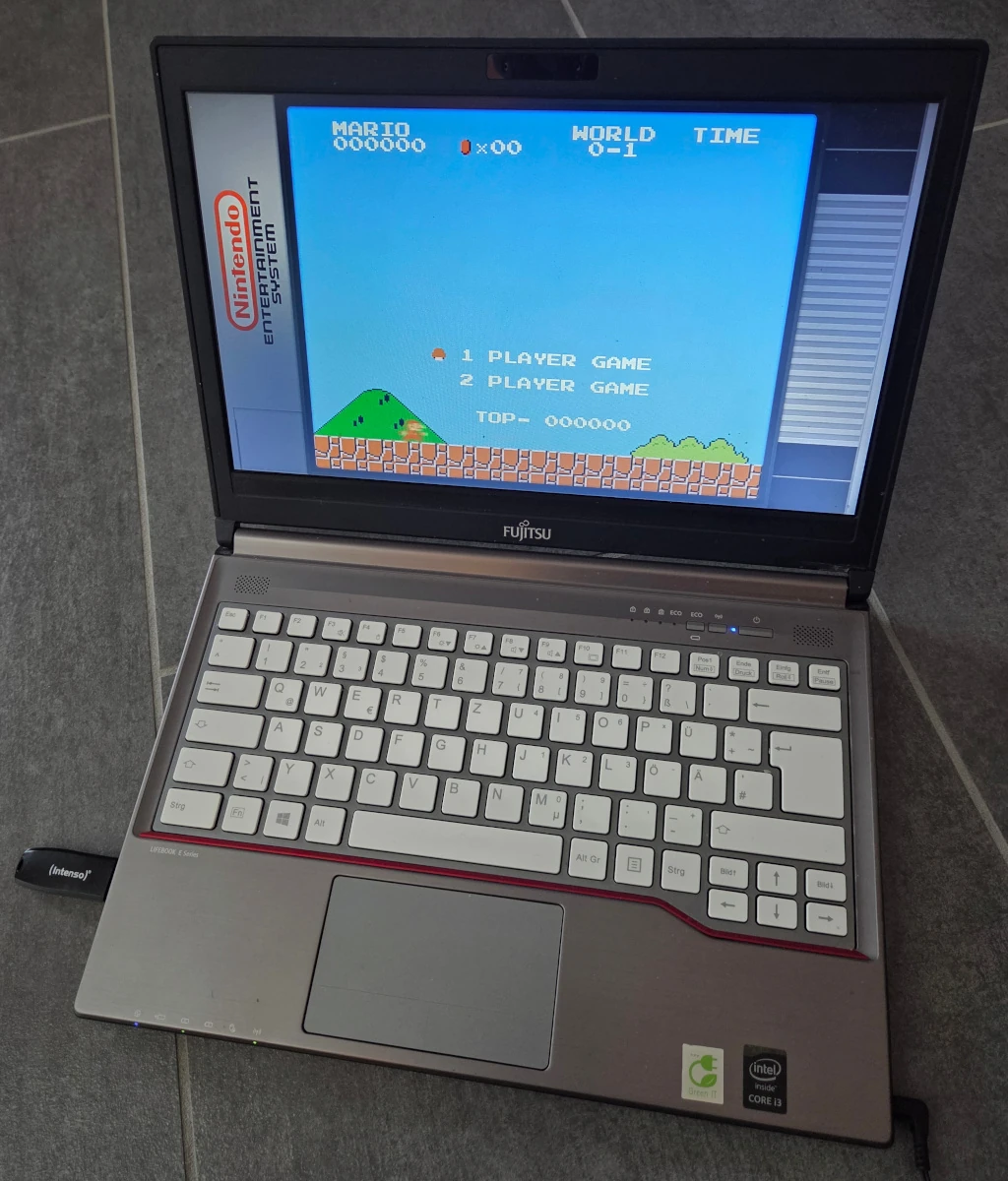🎮 My Son, Retro Gaming & the Magic of Batocera
My little son recently got into Super Mario Bros. — and it’s both hilarious and heartwarming to see those 8-bit plumbers from the ’80s and ’90s come alive again.
To make that happen, I’ve been playing around with a Linux distribution called Batocera.
It’s plug-and-play retro nostalgia: download it, flash it onto a USB stick, and boot your PC directly from it — no installation required.
Batocera comes loaded with emulators for classics like the NES, SNES, Mega Drive, and Commodore.
And yes, you still need to own the original games if you use ROMs — we keep it legal around here 😉.
📚 Vacation Read, Unexpected Insight
On holiday, I decided to read Edward Snowden’s Permanent Record — not exactly poolside fluff, but worth every page.
Then, right between coffee and sunscreen, I stumbled across a passage that made me grin: Snowden talking about Super Mario Bros..
He writes that he learned more from Mario than from many adults.
Watching my kid play the same game decades later, I suddenly got it.
What looks like a silly 8-bit platformer is, in Snowden’s eyes, a perfect lesson about failure, persistence, and action.

🧠 Learning by Doing — Not by Theory
Snowden describes how Mario’s world taught him something schools often don’t: that learning happens through trying, not through theory.
You can’t “think your way” through a level — you have to play it.
You fall into pits, misjudge jumps, get hit by Goombas — and that’s how you learn.
“The game was honest,” Snowden writes. “If you fell, it was because of your own decision. But there was always another life, another chance.”
That honesty stuck with him. In life, like in Mario, knowledge isn’t abstract — it’s earned through experience.
Theories don’t move you forward; pressing the buttons does. (And yes, sometimes you accidentally run straight into a Koopa. Been there.)
⏩ The Scrolling Camera & the Flow of Time
Snowden points out something most players never consciously notice:
In Super Mario Bros., the camera always moves from left to right.
You can stop, jump, or hesitate, but the world keeps scrolling. You can’t go back.
For him, that became a metaphor for time itself: life only moves in one direction.
You can pause — but not for long. Eventually, you have to run, jump, and move on.
“The screen moves whether you’re ready or not.”
It’s oddly comforting: the past doesn’t wait, but it doesn’t vanish either — you carry what you’ve learned into the next level.
⚖️ The Big Jump — From Game to Real Life
Years later, when Snowden faced his defining choice — whether to reveal the NSA’s classified surveillance programs — that side-scrolling metaphor suddenly became real.
He was standing at his own edge: one jump could cost him everything; not jumping meant living in denial.
He realized that not acting is also a choice.
The camera was moving. Time wouldn’t wait for him to think forever.
He had to leap — uncertain, scared, but committed.
“There are moments when you can’t pause anymore. The world keeps moving, and you have to decide whether to run, jump — or be left behind.”
Snowden’s courage wasn’t born from theory — it was the grown-up version of what he’d practiced as a kid: fail, learn, and try again until it matters.
🧩 Life as a Side-Scroller
When I finished the chapter, I couldn’t shake the image: life as one giant side-scroller.
The screen moves; new challenges appear; and the only real failure is not moving at all.
Those childhood mechanics still apply:
Persistence. Curiosity. Action over perfection.
And maybe that’s the secret Snowden wanted to share — that every level of life demands a bit of courage and a few retries.
So, next time you’re hesitating before a metaphorical jump… remember: Mario didn’t stop to theorize either 😄.

